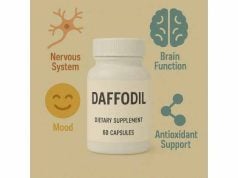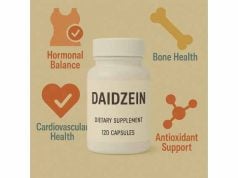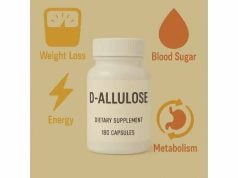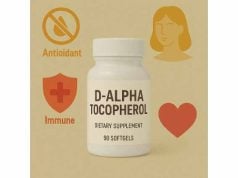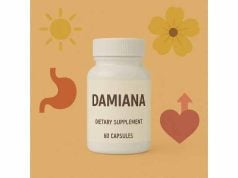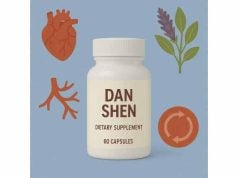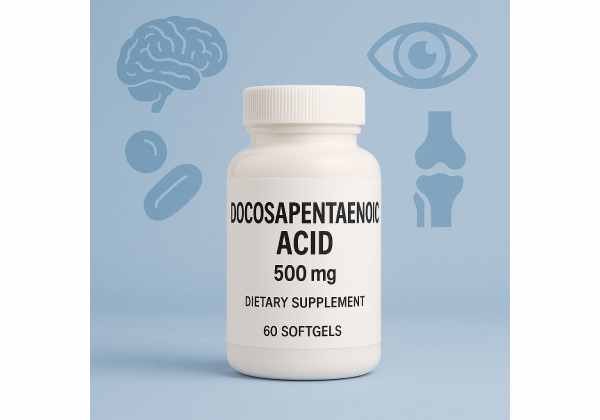
Docosapentaenoic acid (DPA) is a long-chain omega-3 fatty acid found in fish, marine oils, and—unlike EPA and DHA—in meaningful amounts in certain red meats. Although it receives less attention than eicosapentaenoic acid (EPA) and docosahexaenoic acid (DHA), DPA appears to play complementary roles in cardiovascular, metabolic, and inflammatory pathways. It can convert “back and forth” with EPA, serve as a pool for EPA in cell membranes, and participate in the production of specialized pro-resolving mediators that help the body wind down inflammation. In everyday terms, most people obtain DPA automatically when they eat fish or take marine omega-3 supplements; dedicated “DPA-enriched” products also exist. This guide explains what DPA is, how it may help, where to get it, how much people typically consume, safety considerations, and what the current evidence actually shows.
Essential Insights for Docosapentaenoic Acid Users
- May support heart and metabolic markers alongside EPA and DHA; DPA can interconvert with EPA in the body.
- Typical diets provide about 20–30 mg/day DPA; specialty supplements often add 50–200 mg/day; no DPA-specific intake target is established.
- Safety caveat: high total marine omega-3 intakes (generally >1 g/day EPA plus DHA) may affect bleeding risk or trigger atrial arrhythmias in susceptible people.
- Avoid unsupervised use if you have a bleeding disorder, take anticoagulants/antiplatelets, or have a history of arrhythmia—talk with your clinician first.
Table of Contents
- What is docosapentaenoic acid?
- Does DPA have unique benefits?
- How to get DPA from foods and supplements
- How much DPA per day?
- Safety, side effects, and who should avoid DPA
- What the research says so far
What is docosapentaenoic acid?
Docosapentaenoic acid (DPA, 22:5n-3) is one of the three main long-chain omega-3 fatty acids (the others are EPA and DHA). “Long-chain” means the molecule has 20 or more carbons; this size allows it to embed in cell membranes and influence fluidity, receptor function, and signaling. DPA is biochemically positioned between EPA (20:5n-3) and DHA (22:6n-3). Enzymes can elongate and desaturate EPA to DPA, and the body can also retroconvert DPA back to EPA when needed. This bidirectional flow makes DPA a flexible reservoir that may help maintain EPA availability in tissues while also taking part in its own set of actions.
Although fish and marine oils are the best-known sources of long-chain omega-3s, DPA has a slightly different food footprint. Cold-water fish and fish oils do contain some DPA, typically as a smaller fraction compared with EPA and DHA. However, DPA is also present in ruminant meats (beef and lamb) because of how these animals synthesize fats in the rumen. Cultural diets rich in marine mammals (such as seal oil) are particularly DPA-dense. Human milk naturally provides long-chain omega-3s, including DPA, to infants.
Inside the body, DPA integrates into phospholipid bilayers in heart, vascular, brain, and immune cells. It is a precursor to specialized pro-resolving mediators (SPMs)—signaling molecules that help transition the immune system from “inflammation” to “resolution.” DPA-derived SPMs overlap with, yet are distinct from, those made from EPA or DHA. Through these mechanisms, DPA may modulate platelets, endothelial function, triglyceride metabolism, and inflammatory tone. Importantly, DPA rarely acts in isolation in foods or supplements; it travels with EPA and DHA, and their combined patterns likely shape health outcomes.
In daily practice, you don’t need to choose between “only DPA” or “only EPA/DHA.” A seafood-forward diet and most marine omega-3 supplements naturally deliver all three, with EPA and DHA dominant and DPA present in smaller but potentially meaningful amounts. For readers specifically interested in DPA, dedicated products (for example, some seal-oil or DPA-enriched fish oils) can increase intake further, but the evidence base for DPA-specific dosing remains more limited than for EPA and DHA.
Does DPA have unique benefits?
Short answer: possibly, but the story is nuanced. Research over the past decade suggests DPA contributes its own effects beyond being merely a stepping-stone between EPA and DHA. Observational biomarker studies—where scientists measure the percentage of individual fatty acids in blood lipids or red blood cell membranes—often analyze EPA, DPA, and DHA separately. In these analyses, higher long-chain omega-3 status is linked with favorable outcomes, and DPA generally “tracks with” EPA and DHA, sometimes showing independent associations.
Mechanistically, DPA appears to share several lipid-modifying properties with EPA. It can help reduce triglyceride levels in some experimental systems and may influence vascular function. Because DPA can retroconvert to EPA, it may act as a buffer that sustains EPA availability in membranes and circulation. This pool effect could matter when tissues are under metabolic or inflammatory stress and demand for EPA rises. DPA also participates in the biosynthesis of specialized pro-resolving mediators. These SPMs help clear inflammatory cells, support barrier integrity, and promote a return to tissue homeostasis—useful in cardiovascular and metabolic contexts where low-grade inflammation fuels risk.
Another often-missed feature: DPA’s food distribution differs from EPA and DHA. In populations where fish intake is modest but red meat consumption is common, DPA can contribute a notable portion of total long-chain omega-3 intake. This has two practical implications. First, people with low fish consumption may still carry measurable DPA in their blood, which may partly explain why biomarker studies sometimes find benefits even when dietary EPA and DHA estimates look low. Second, if you shift toward fish while reducing certain meats, EPA and DHA usually rise, and DPA can still be maintained via seafood plus modest background sources.
That said, clinical trials isolating DPA (as the primary intervention) are sparse compared with the large number of EPA/DHA studies. Most randomized trials that improve cardiometabolic markers use EPA, DHA, or their combination. Therefore, while it’s biologically plausible that DPA adds to omega-3 benefits and in some pathways provides distinct advantages, definitive DPA-only trials are limited. The most evidence-based approach remains to secure adequate long-chain omega-3 exposure overall—primarily through seafood or well-made marine oils—while recognizing that DPA is part of that beneficial package and may be especially relevant in certain dietary patterns.
How to get DPA from foods and supplements
If you prioritize foods first, two strategies cover most needs:
- Eat fish or shellfish twice weekly. Oily species (salmon, sardines, mackerel, herring, trout) provide the richest mix of long-chain omega-3s. While EPA and DHA dominate, these fish also supply DPA in smaller amounts that add up across meals. Depending on species and cut, a 100-gram portion of salmon can contain meaningful DPA alongside large amounts of EPA and DHA.
- Use high-quality marine oils when diet alone falls short. Standard fish oils, concentrated fish oils, and krill or algal oils vary in composition. Typical “18/12” fish oil softgels (about 1,000 mg oil) provide ~180 mg EPA and ~120 mg DHA and only a few milligrams to a few dozen milligrams of DPA. Concentrated products increase EPA/DHA substantially; DPA remains a small fraction but is still present. DPA-enriched oils, such as certain seal-oil formulations or specialized fish oils, can lift DPA into the tens to low hundreds of milligrams per day, depending on brand and dose.
Label reading tips
- Look for total EPA plus DHA per serving; this remains the main evidence-based marker for cardiometabolic benefits. DPA content may be listed separately; if not, it is often a small percentage of the total long-chain omega-3s.
- Prefer products that disclose third-party testing (purity, oxidation, heavy metals) and provide a harvest or expiration date. Omega-3s are sensitive to oxidation; freshness matters for efficacy and tolerability.
- Choose a form that fits your routine: softgel vs liquid, triglyceride or ethyl ester, with meals to improve absorption. If you’re vegetarian or avoid fish, algal oil supplies DHA (and often EPA); DPA in vegan products is uncommon.
Food context matters
DPA’s presence in both seafood and certain meats means overall dietary pattern shapes intake. A Mediterranean-style pattern—fish, extra-virgin olive oil, legumes, nuts, and plenty of plants—naturally provides EPA/DHA and some DPA while displacing processed meats. If you do include red meat, opt for lean cuts and sensible portions; while beef and lamb can contribute DPA, they also bring saturated fat and other nutrients that require balance.
Special life stages
- Pregnancy and lactation: DHA is prioritized for fetal brain and eye development, with EPA providing complementary benefits. DPA comes along with these and is present in human milk. Expectant and breastfeeding individuals should follow clinician guidance focusing on DHA (often 200–300 mg/day) and safe seafood choices.
- Older adults and cardiometabolic risk: When triglycerides are high or fish intake is low, many clinicians recommend concentrated marine oil to reach EPA+DHA targets. DPA intake rises automatically in this context; there’s usually no need to seek DPA-only products unless advised.
Bottom line: focus on consistent seafood intake or well-vetted marine oils to achieve total long-chain omega-3 coverage. DPA will be part of that coverage—modest in amount, but metabolically active and potentially additive to EPA/DHA benefits.
How much DPA per day?
There is no official DPA-specific daily intake established by major health authorities. Most guidance targets combined EPA plus DHA (commonly ~250–500 mg/day for general health from food, or two seafood meals per week). In this framework, DPA is considered part of the broader long-chain omega-3 family; you obtain it automatically alongside EPA and DHA from fish and many supplements.
What people actually consume: In U.S. dietary surveys, average DPA intake is roughly 20–30 mg/day, reflecting modest contributions from seafood and meats. Individuals who eat oily fish regularly will obtain more, and those who use specialized DPA-enriched oils can add ~50–200 mg/day depending on product and dose. Keep in mind that these amounts are far smaller than typical EPA or DHA intakes from fish-forward diets or concentrated oils.
Pragmatic targets
- Everyday wellness: Prioritize hitting EPA+DHA ~250–500 mg/day through seafood or supplements. This is the most widely supported intake range for the general population. DPA will accrue in the background without micromanagement.
- Low fish intake: If you seldom eat seafood, consider a marine oil that delivers at least 500–1,000 mg EPA+DHA per day. DPA will typically be present in small amounts; if your clinician wants higher DPA exposure for a specific reason, look for a product that lists DPA on the label.
- Triglyceride reduction (under medical care): Prescription-strength EPA/DHA or EPA-only products use 2–4 g/day of EPA/DHA equivalents. DPA is not the lead actor here; follow your clinician’s prescription and monitoring plan.
How to translate labels into real intake
- A standard 1,000 mg fish-oil softgel with “18/12” strength contains ~300 mg EPA+DHA total and a small, variable amount of DPA (often 5–30 mg). Two to three such softgels daily approach general EPA+DHA targets and incidentally raise DPA.
- Concentrated oils might provide 600–1,000 mg EPA+DHA per softgel; DPA content remains proportionally low unless specifically enriched.
- DPA-enriched oils (e.g., some seal-oil products) may add 20–100 mg DPA per standard serving, but formulas vary widely. Always check the Supplement Facts panel.
A note on biomarkers vs intake
Dietary DPA intake doesn’t always tightly predict blood DPA levels because of interconversion with EPA and tissue distribution. That means your long-chain omega-3 biomarker (if measured) reflects both intake and metabolism. If your clinician orders an omega-3 blood test, they will usually focus on EPA+DHA percentage; DPA may be listed separately and can provide additional context.
In summary, aim for adequate total long-chain omega-3s, not a precise DPA number. Use fish meals and/or a trusted marine oil to reach EPA+DHA goals; DPA will be covered along the way. Consider DPA-enriched options only if there’s a specific strategy or clinical recommendation to do so.
Safety, side effects, and who should avoid DPA
DPA is consumed safely worldwide as part of seafood and marine oils. Most people tolerate typical dietary amounts without issue. When thinking about safety, it’s more practical to consider total marine omega-3 intake (EPA+DHA±DPA), since products and foods rarely deliver DPA alone.
Common, generally mild effects
Some individuals notice fishy aftertaste, reflux, or mild gastrointestinal upset when starting marine oils. Taking capsules with meals, splitting doses, or switching to a fresh, third-party-tested product often resolves these issues.
Bleeding and procedures
Omega-3s can influence platelets and clotting times. At modest intakes through food or standard supplements, clinically significant bleeding is uncommon. However, at higher doses (for example, ≥1 g/day of EPA+DHA from concentrated oils), the bleeding risk may rise in susceptible individuals or in combination with anticoagulants/antiplatelets. If you have a bleeding disorder, take warfarin, direct oral anticoagulants, or dual antiplatelet therapy, or you’re scheduled for surgery or dental procedures, speak with your clinician about whether to pause omega-3 supplements beforehand.
Heart rhythm considerations
Several recent analyses indicate that high-dose marine omega-3 supplementation can increase atrial fibrillation risk in some people, particularly at gram-level intakes used for triglyceride lowering. The absolute risk is small and dose-related, but if you have a history of AF or palpitations, discuss omega-3 plans with your cardiology team. Food-level intakes from fish are not implicated in the same way.
Allergies and sensitivities
If you have fish or shellfish allergy, choose algal oil products (for DHA ± EPA) or consult an allergist. DPA-enriched oils from marine mammals (e.g., seal oil) may carry unique ethical, cultural, or regulatory considerations depending on where you live.
Medication interactions
Beyond antithrombotics, omega-3s can modestly lower triglycerides and may interact with other lipid-modifying strategies. If you’re on statins, fibrates, or niacin, combined use is common but should be coordinated by your clinician to monitor lipids and liver enzymes as appropriate.
Special populations
- Pregnancy and lactation: DHA is prioritized; fish choices should follow local mercury guidance. DPA is naturally present in human milk and comes along with DHA/EPA when you eat fish or take prenatal omega-3s.
- Children: Focus on fish intake suited to age and local advisories. Discuss any supplement use with a pediatric clinician.
- Chronic conditions: Individuals with arrhythmia, bleeding disorders, active GI disease, or planned procedures should seek individualized advice before starting or escalating marine oils.
Bottom line: seafood-level intakes of long-chain omega-3s are generally safe. High-dose supplementation warrants clinical oversight—especially if you have bleeding risks or arrhythmia.
What the research says so far
Observational biomarker studies
Large pooled analyses indicate that higher blood levels of long-chain omega-3s (measured as EPA, DPA, DHA) are associated with lower risks of all-cause mortality across many cohorts. In these datasets, DPA typically contributes alongside EPA and DHA and sometimes shows independent associations with outcomes. Another global pooling project focusing on type 2 diabetes found that higher circulating **seafood-derived omega-3s—including DPA—**were associated with lower diabetes risk. These biomarker studies can’t prove causation, but they strengthen the case that the trio of EPA, DPA, and DHA in membranes carries health relevance.
Dietary intake and status
National nutrition surveys show that DPA intake is low on average—tens of milligrams per day—yet plasma or red-cell DPA levels depend not only on DPA intake itself but also on EPA and DHA intake and on metabolic interconversion. In other words, eating more EPA/DHA can increase measured DPA in blood even if dietary DPA stays modest. This echoes clinical observations that omega-3 composition in blood reflects both what you eat and how your body processes and distributes these fats.
Mechanistic insights
DPA participates in SPM biosynthesis, helps modulate platelet function and endothelial tone, and can retroconvert to EPA, serving as a membrane reservoir. Preclinical work suggests DPA may influence triglyceride metabolism and inflammation resolution in ways broadly similar to EPA, with some distinct mediator profiles. Animal and cell studies are useful for mapping pathways, but translation to human clinical benefit requires trials.
Randomized trials
Compared with the large body of EPA/DHA trials, DPA-only randomized trials remain scarce. Most clinical evidence for triglyceride lowering, cardiovascular risk modification, pregnancy outcomes, and neurocognitive endpoints comes from EPA, DHA, or their combination. In practical terms, this means clinicians still prescribe EPA/DHA-based therapies for lipid management, while DPA “rides along” in diet and many supplements and may enhance or support overall omega-3 biology.
Where consensus stands today
- Eating fish twice per week or reaching ~250–500 mg/day EPA+DHA is a widely supported goal for general health.
- DPA likely contributes to benefits observed with higher long-chain omega-3 status, but definitive DPA-specific outcome trials are limited.
- For individuals who want to emphasize DPA, DPA-enriched marine oils can raise intake, but decisions should be guided by overall omega-3 needs, quality of the product, and medical context.
As research evolves, expect clearer answers about whether targeting DPA above background levels adds unique clinical value beyond maintaining a healthy total long-chain omega-3 status.
References
- Role of n-3 long-chain polyunsaturated fatty acids in human nutrition and health: review of recent studies and recommendations 2021 (Review). ([PubMed Central][1])
- Blood n-3 fatty acid levels and total and cause-specific mortality from 17 prospective studies 2021 (Consortium analysis). ([PubMed Central][2])
- n-3 Fatty Acid Biomarkers and Incident Type 2 Diabetes: An Individual Participant-Level Pooling Project of 20 Prospective Cohort Studies 2021 (Consortium analysis). ([PubMed Central][3])
- n-3 docosapentaenoic acid (DPA) intake and relationship to plasma long-chain n-3 fatty acid concentrations in the United States: NHANES 2003–2014 2019 (Population intake and biomarkers). ([PubMed Central][4])
- Omega-3 Fatty Acids – Health Professional Fact Sheet 2022 (Guideline/fact sheet). ([Office of Dietary Supplements][5])
Disclaimer
This article is for general educational purposes and is not a substitute for personalized medical advice, diagnosis, or treatment. Do not start, stop, or change any supplement or medication without talking to your qualified health professional, especially if you have a bleeding disorder, take anticoagulants or antiplatelet drugs, are pregnant or breastfeeding, or have heart rhythm conditions. If you think you may be experiencing a medical emergency, call your local emergency number immediately.
If you found this guide helpful, please consider sharing it with friends or colleagues on Facebook, X (formerly Twitter), or your favorite platform. Your support helps us keep creating clear, evidence-based health content. Follow us on social media for future updates.

